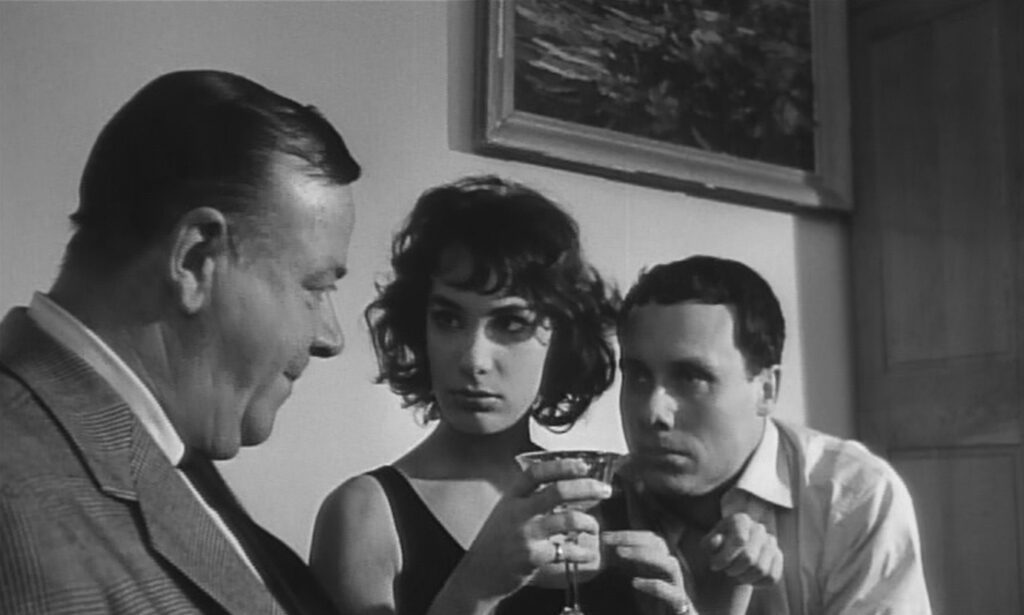
Les bonnes femmes
1960, directed by Claude Chabrol
Les bonnes femmes opens with the Spirit of Liberty (le Génie de la Liberté) atop the July Column at the center of the Place de la Bastille. The appliance shop that unites the four “bonnes femmes” is a short distance away near the site of the historic prison, which is so central to French history that its storming on 14 July 1792 gave France its national holiday. The statue and its location both point to the first word in France’s national motto, “Liberté, égalité, fraternité”. Les bonnes femmes is concerned with a question of liberty, although the movie consistently expresses it in the negative. All of the film’s major signs point to confinement – the Bastille, the zoo, the store, the situation of working class women, even time itself.
In one of the first lines, Jane’s boyfriend says he can’t stay out late or he’ll be “confined to the barracks”. For him confinement is an unpleasant threat, but for the women it’s a constant fact of life. Ginette, Jacqueline, Jane, and Rita live in a world where men do what they please with women. The imbalance is so extreme that there’s scarcely a man who doesn’t play a part in confining women, starting with the barker luring men into the Grisbi Club. Marcel is a rapist; his companion Albert is a pervert; André is a murderer; Rita’s fiancé Henri is a spineless tyrannical snob; shop owner Mr. Belin harasses his employees; and Ginette’s theater manager shows her no sympathy. Henri’s father is a hypocrite who sells canned food that he wouldn’t touch himself; Dolly Bell’s burlesque brings out the lewd savage in every male; and at the swimming pool every man except André watches passively as Marcel and Albert abuse the women. The movie’s title means “The Good Women” but its unspoken corollary is that the men are not so good.
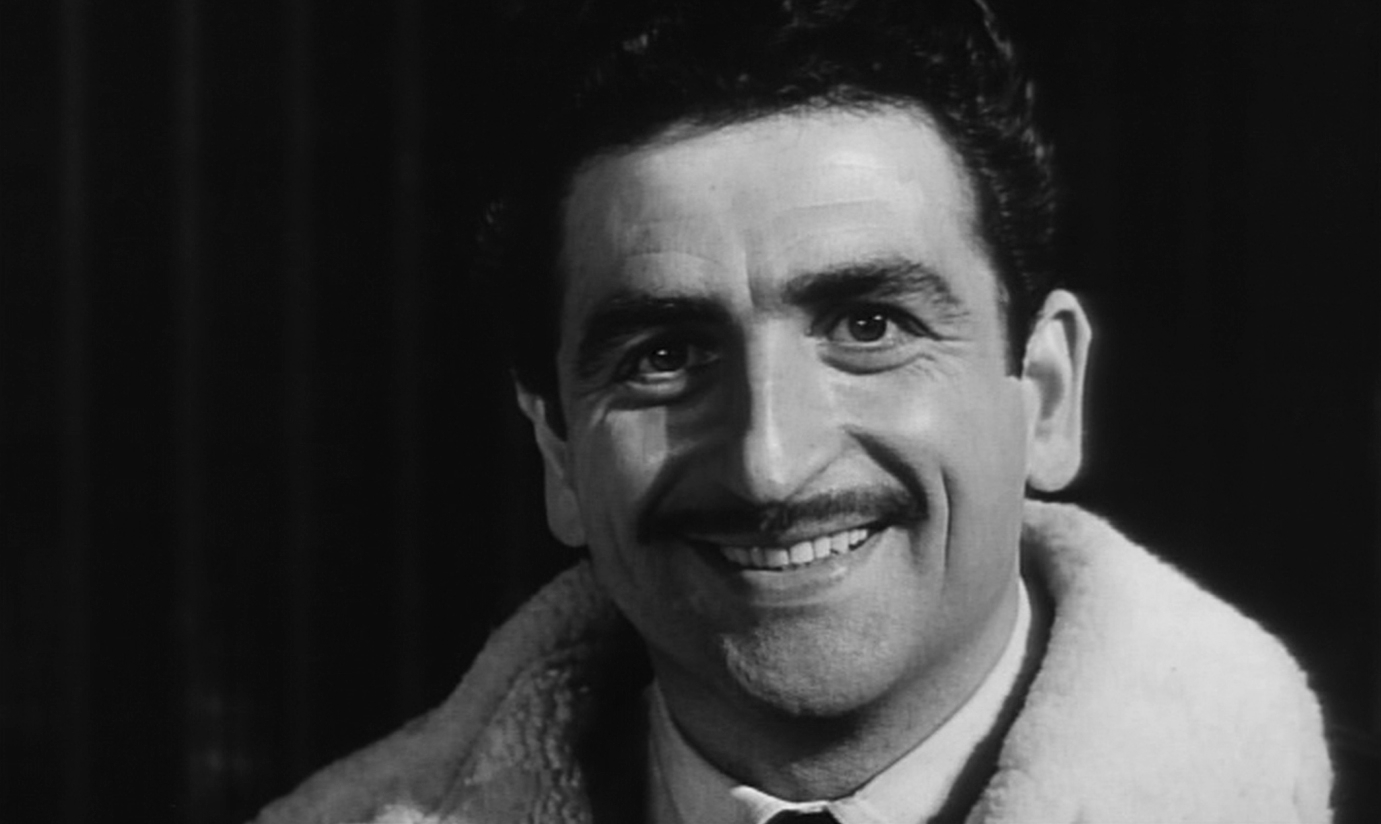
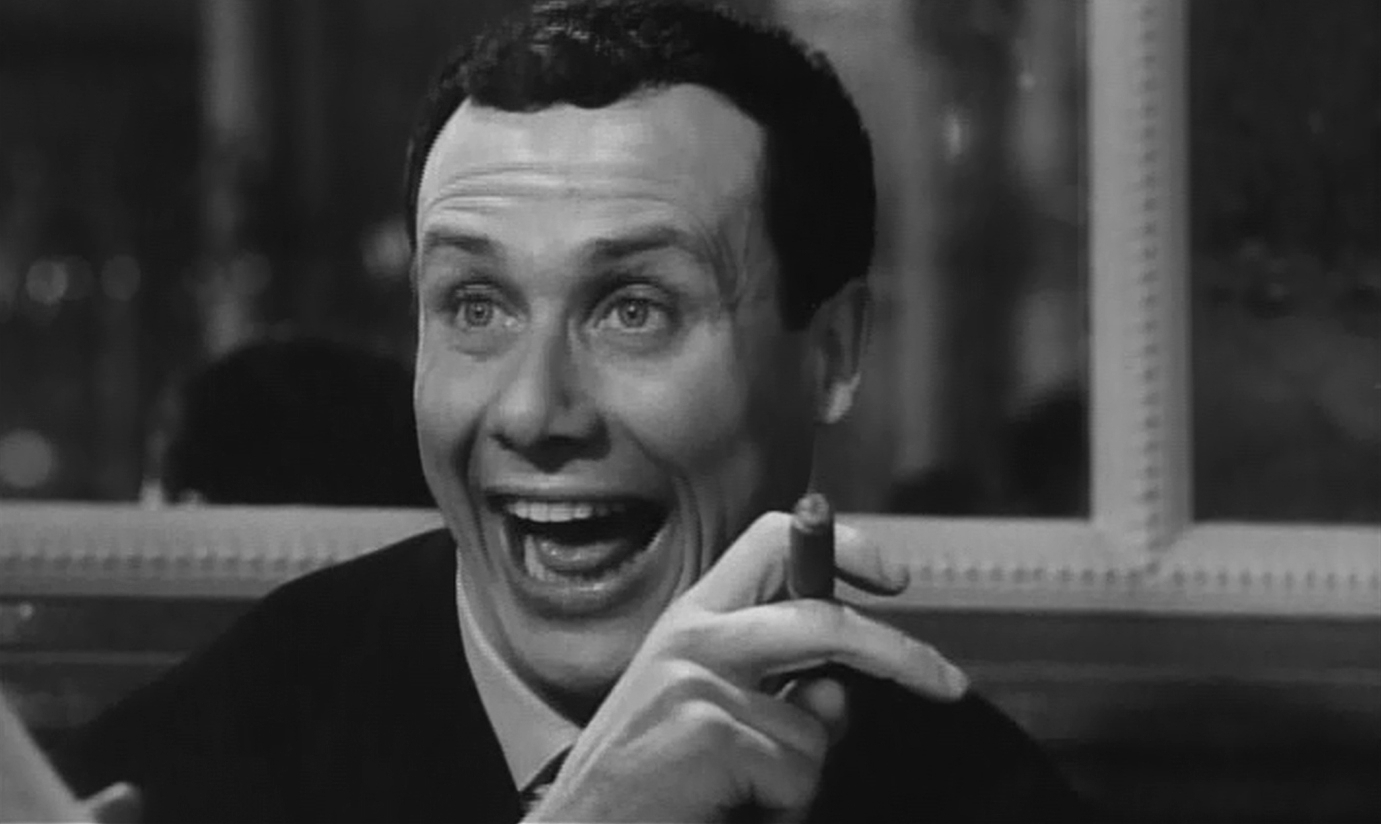
The only sympathetic men are Jane’s soldier and the delivery boy who asks Jacqueline out, but the soldier’s interest in Jane seems as casual as hers in him, and the delivery boy is too needy. It’s not only oppression that confines women to loneliness and hardship, but also a lack of good options. Of course the women make their share of bad choices, like getting into the car with Marcel or trusting André. Les bonnes femmes doesn’t demonize men or sanctify women, but the disparity is pronounced. We needn’t take the film’s word for it that the world is like that; rather Les bonnes femmes holds a mirror to the world and asks us to consider how accurate the reflection is.
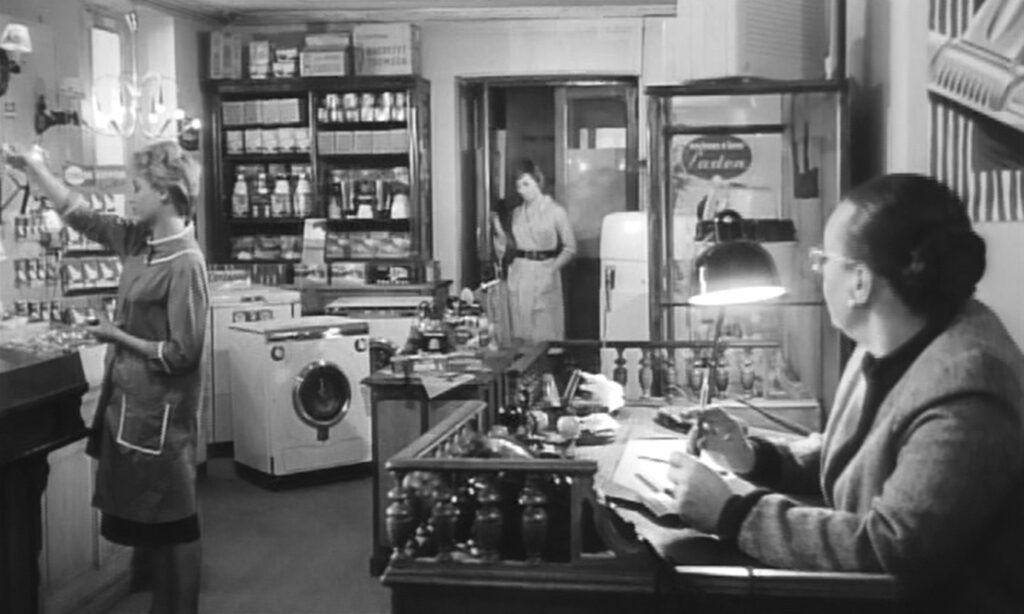
Confinement here is not merely an imposition on women, something that could be lifted if only men had the magnanimity to do so. The appliance shop cashier Madame Louise keeps a handkerchief soaked with the blood of Eugen Weidmann, a sadistic serial killer who preyed on women and was guillotined in 1939. This fetish object connects the film’s picture of oppression to the real world, but it also marks how thoroughly women have internalized their place in a man’s world. Madame Louise’s fascination bespeaks a strange affection for the killer, a willful acceptance of a power relation that allows men not only to dominate but to obliterate women. When Jacqueline asks her to show the fetish for “good luck”, the piece of cloth symbolically transfers its perverse purpose to the young woman, auguring her death the next day at the hands of another man in the same mold as Weidmann.
Jacqueline’s fate represents the logical end that could befall any one of the four in their confined world, either dramatically or in the slow, undramatic draining of life. All the foreshadowing suggests an inescapable destiny. When Jacqueline first sees André outside the Grisbi Club she touches her scarf where his hands will strangle her within two days. At the zoo André stands by the bats, and Jacqueline touches her neck again as if sensing a vampire nearby. He then goes to the snakes, again forecasting strangulation, and when a tiger startles Jacqueline the film cuts from the angry beast (who would aim for the neck) to André’s laughing face. The blood on Madame Louise’s handkerchief comes from a killer’s neck, and at Jacqueline’s last meal André admires her long neck like Nosferatu admiring the neck of Hutter’s wife. As the couple approaches the murder site, a row of trees reflected in a lake forms a set of prison bars shutting around both victim and killer.
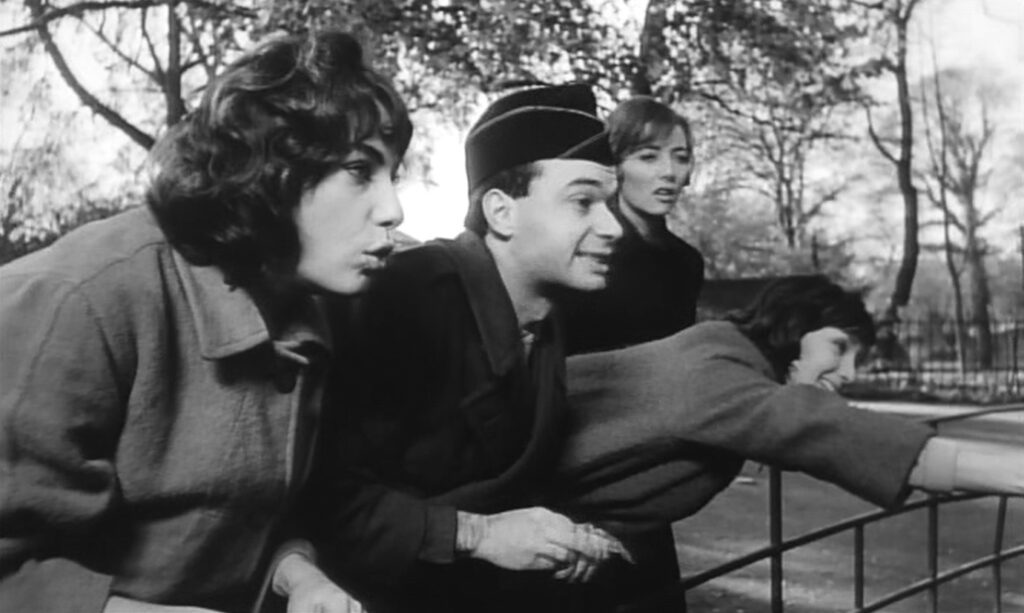
The shopgirls’ visit to the zoo on their lunch break is a moment of freedom. They look forward to it all morning, and their spirits are unleashed as they watch the animals, but their treasured freedom is tainted by irony because the animals are all confined, their lives reduced to pacing in circles or vegetating. The young friends seem to delight in seeing creatures less free than they are, but any enjoyment they get must be fleeting because it reflects their own unhappiness.
Again presaging Jacqueline’s death is a triple allusion to Georges Bizet’s opera Carmen. In front of a poster for the opera, Mr. Belin sings a famous excerpt from it while giving Jacqueline a flower. Like the heroine of Carmen, Jacqueline will be killed by a man in the last act.
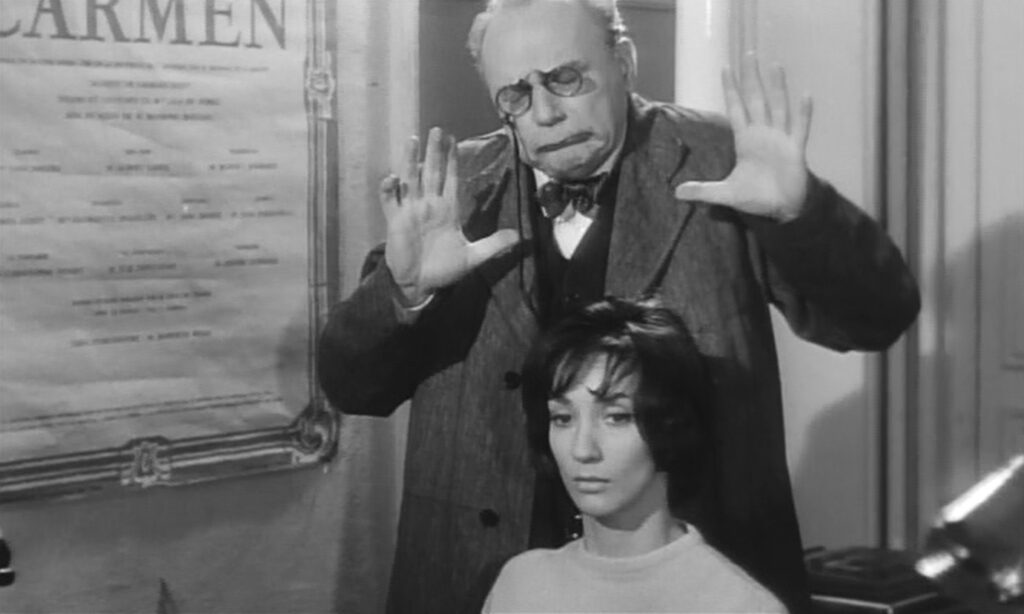
Time itself confines the women, always limiting them or tantalizing them with a false sense of freedom. Apart from Jacqueline’s excursion on André’s motorcycle the following day, and a brief coda afterwards, the action spans about 24 hours from Marcel and Albert’s appearance to the next evening at the swimming pool. The movie covers one full workday, from the shop’s opening at 9:00 a.m. until its closing at 7:00 p.m. Mr. Belin upbraids Jacqueline for arriving three minutes late, and the employees are bound to remain in the shop until the clock lets them go at noon and again at closing time. Stressing the oppressiveness of time, the movie inserts several clocks into the last hour of work, counting down to the moment of freedom:
6:15 – a cantilevered shop clock followed by commuting workers and a busy market
6:36 – another outdoor clock
6:44 – a man looks at his wristwatch
6:52 – the Gare de Lyon clock tower
Albert checks his watch at his office (time not legible)
6:55 – a woman asks André what time it is
Marcel lets his secretary go early then retracts his offer
6:58 – Henri refuses to let a woman in his employ leave early
Finally, back at the appliance store, Monsieur Belin listens to Carmen with a metronome while the shopgirls count down the last two minutes. For the bourgeoisie time is something to enjoy, but to the proletariat the clock marks the walls of a daily prison.
Madame Louise makes a special point of mentioning that Weidmann was guillotined at precisely 6:00 in the morning. Again, clock time is a merciless constraint on life. Although her comment is not placed in time, it happens to fit just before the montage of clocks as if she pronounced it at exactly 6:00 p.m.
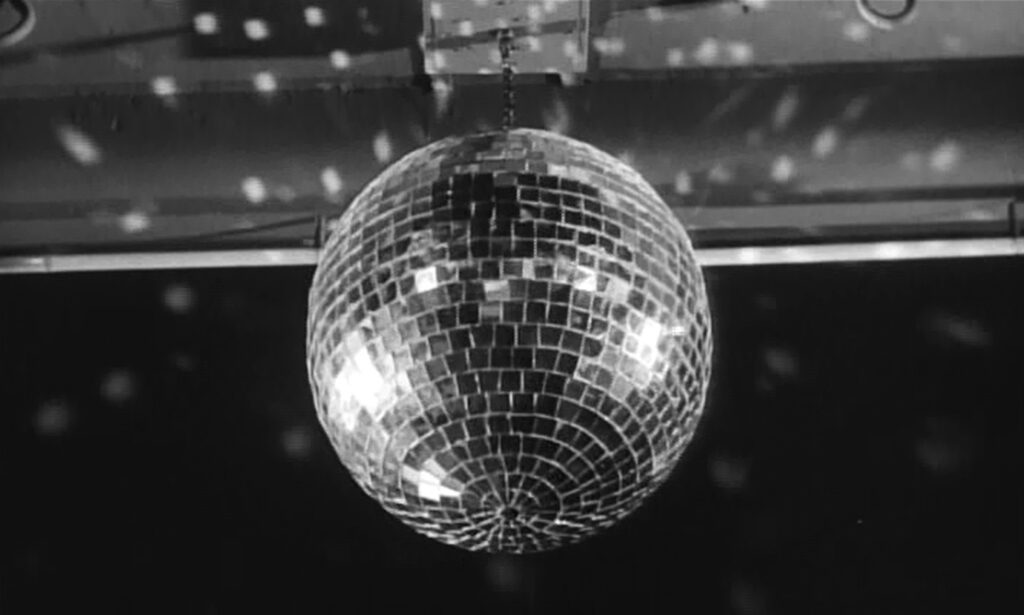
Each of the four bonnes femmes represents a distinct form of loneliness, a particular type of dignity, a particular mode of oppression, and a particular aspiration. Rita wants a practical marriage; Ginette wants a career; Jacqueline wants romantic love; and Jane drifts through life doing whatever suits her in the moment. These four types encompass the most basic avenues of life open to young women in their position. The film ends with a fifth bonne femme, an anonymous young woman in a dance hall who accepts a young man’s invitation to dance. Her story could lead in any direction, but the audience’s expectations for her will surely be colored by the four lives they have just watched. If we take the ending as cyclical, as the spinning globe of the disco ball suggests, then the ending is pessimistic. If we take it as hopeful, as the glistening lights on the same disco ball might seem to promise, then the movie leaves us to ask what needs to change to make a better life possible for her. More broadly, returning to the national motto that the opening frames point to, the movie asks how France can live up to its ideal of liberty, how it can extend equality to women, and how it can redefine fraternity to encompass the feminine.
CONNECTIONS:
Shadow of a Doubt – Vampire metaphor applied to a man who preys on women
Cairo Station – Catalogue of ways that men restrict women; insertions of clocks
Cléo from 5 to 7 – Film counts down the minutes to illustrate the oppressiveness of clock time; feminist point of view; Paris setting within a clearly defined span of time
Antareen – Story of confinement
La cérémonie – Industrialist who makes canned food that he won’t eat himself
Hannibal – Fetishization of crime
Get Out – Catalogue of ways that a disadvantaged class of people (women or African Americans) is confined in an adverse society